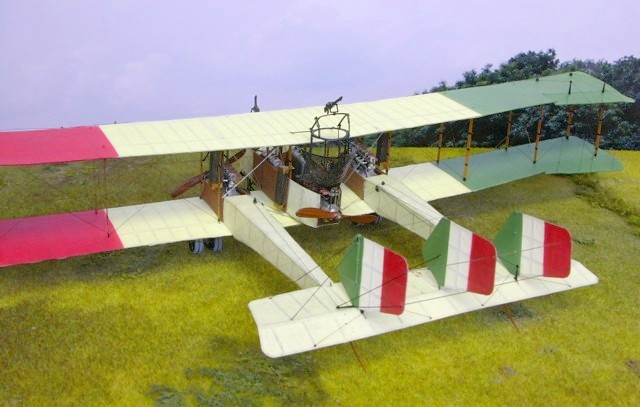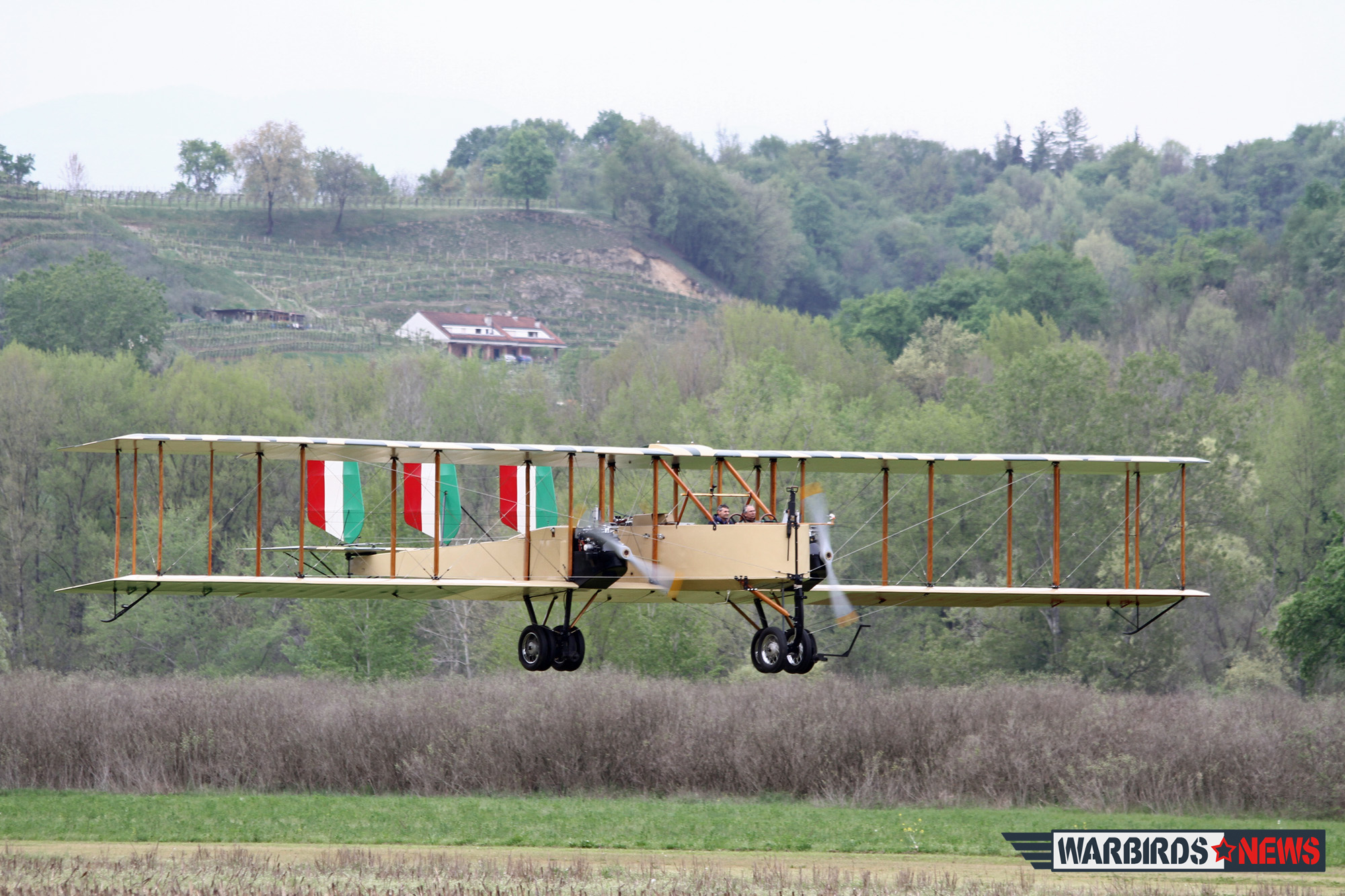By the last couple years of World War 1, heavy bombers were
just starting to come into their own. Still relatively fragile biplanes
generally powered by two engines, although three and four engine types were
also tried, they carried a comparatively small payload over short distances,
and were generally more effective as psychological weapons than in actual
combat. Even so, they, far more than the German Zeppelins revealed a future
where the logistics and cities of enemy forces could be attacked from the air.
In Battlefield 1, the German forces get the Gotha G.IV,
while the Allies get the Italian designed Caproni Ca.3.
.jpg) |
| Gotha G.IV in flight. The triangular "Gotha Tunnel" cutout for the rear gunner is clearly visible. (Photo credit Wingnut Wings |
|
|
|
|
|
|
|
First flown in 1916, and introduced to operations in March
1917, the Gotha G.IV incorporated an innovative “Gotha tunnel” cutout for the
rear gunner. The cutout allowed the gunner to utilize the rear dorsal gun
against enemy fighters trying to get in the blind spot behind and below the
aircraft, without requiring a third gunner and weapon station as on the Gotha
G.III. With a top speed of 83mph and a bombload of 1,100lbs, the G.IV wasn’t
getting anywhere fast, but then, neither did any other bombers. The G.IV also
suffered from a serious design flaw, later corrected in the G.V, with fuel
tanks positioned above the twin pusher engines. In ground handling accidents
(which caused far more losses than enemy fire) this positioning proved…
unfortunate.
.jpg) |
| One of the most common ground loss positions for WWI aircraft. Photo via Wingnut Wings |
The Caproni Ca.3, meanwhile, while an Italian design, was
also used by French and American forces during the war. A tri-motor (two
pulling and one pushing), triple tail design, it carried a crew of four (Pilot,
Co-pilot/navigator, forward gunner, and rear gunner/mechanic) at a top speed of
85mph, with a maximum bombload of 1,764lbs. The Caproni solved the rear gunner
problem by using a twin-boom configuration for the tail, although its center
rear mounted engine necessitated a unique solution to where the rear gunner had
to be positioned.
 |
| Caproni Ca.3 model showing off the twin boom configuration, rear engine and gunner position. Photo from Modell Versium |
In flight, he stood in a caged platform above the engine and
just behind the propeller, so that his machinegun would clear the propeller
arc. I don’t think I would have wanted that assignment!
.jpg)
.jpg)



No comments:
Post a Comment